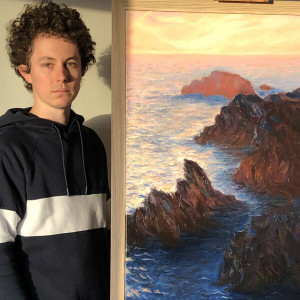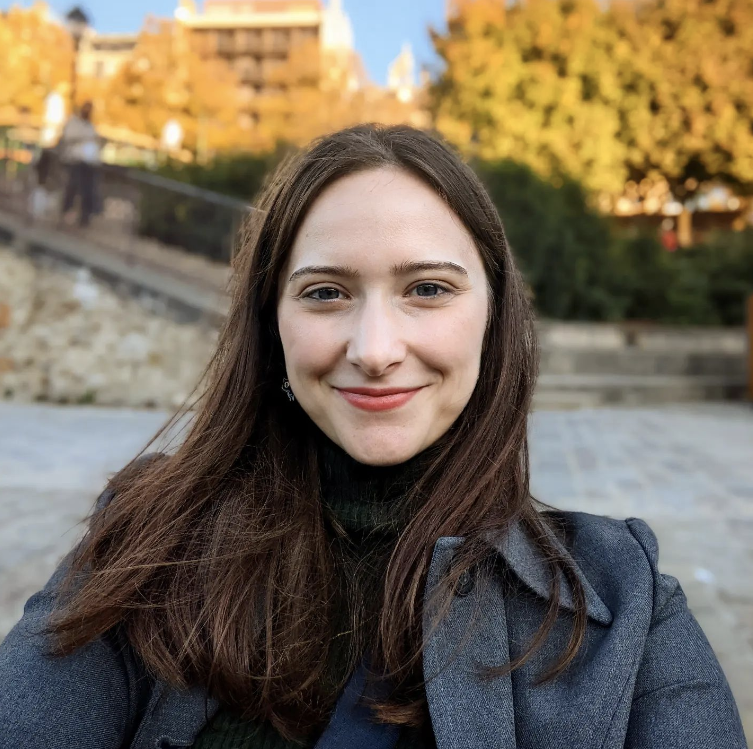Long before Europeans made their way to the continent now known as Australia, there were many groups of peoples living in Australia and the Torres Strait Islands. It’s estimated that the first people to arrive in Australia did so 65-80,000 years ago; Europeans only found the land in 1606 when Dutch explorer Willem Janszoon landed at Cape York Peninsula. However, Europeans wouldn’t attempt to settle the area until 1770 when James Cook arrived with the intent of claiming land in the name of Britain.
So, what type of art were the Indigenous peoples of Australia creating before European interference, and how has it evolved since the 18th century?
Aboriginal art refers to art made by the Indigenous peoples of Australia, also called First Nations peoples.
The Aboriginal art's meaning in ancient times is lost knowledge, but it’s suspected to refer to information about everyday life and Dreaming.

Early Indigenous Art: Rock Art
Just like any other ancient civilization or group of people, the First Nations people had a rich culture filled with artistic creations. And just like the earliest days of any civilization, the first canvases were rocks.
There are two main types of rock art in early Aboriginal art: carvings (petroglyphs) and drawings/paintings (pictographs).
While it’s thought that people arrived to the continent as early as 80,000 years ago, the earliest examples of rock art that has been found is only about 30,000 years old. However, tools for making art that date back to about 50,000 years ago have also been discovered. These discoveries make Indigenous Australian art the oldest known continuous traditional art form in the world!
Rock Drawings and Paintings
The earliest artwork to have ever been carbon-dated is a charcoal painting on a fragment of rock found at the Narwala Gabarnmang rock shelter in the Northern Territory; it is 28,000 years old. But, it’s believed there are many other even older paintings and drawings in Australia; they just haven’t been dated.
Paintings found at Madjedbebe rock shelter in Arnhem Land are estimated to be about 80,000 years old!
Aboriginal people drawing pictographs used either dry colours (charcoal, clay, chalk and ochre) or wet colours (differerent minerals). Mediums like charcoal, chalk, and solid ochre could be applied by drawing with them. Materials like ochre, chalk, and other minerals were sometimes powders that were mixed with a binding substance to create a wet paint and could be applied with the fingers or with brushes made of chewed and frayed sticks or hair.
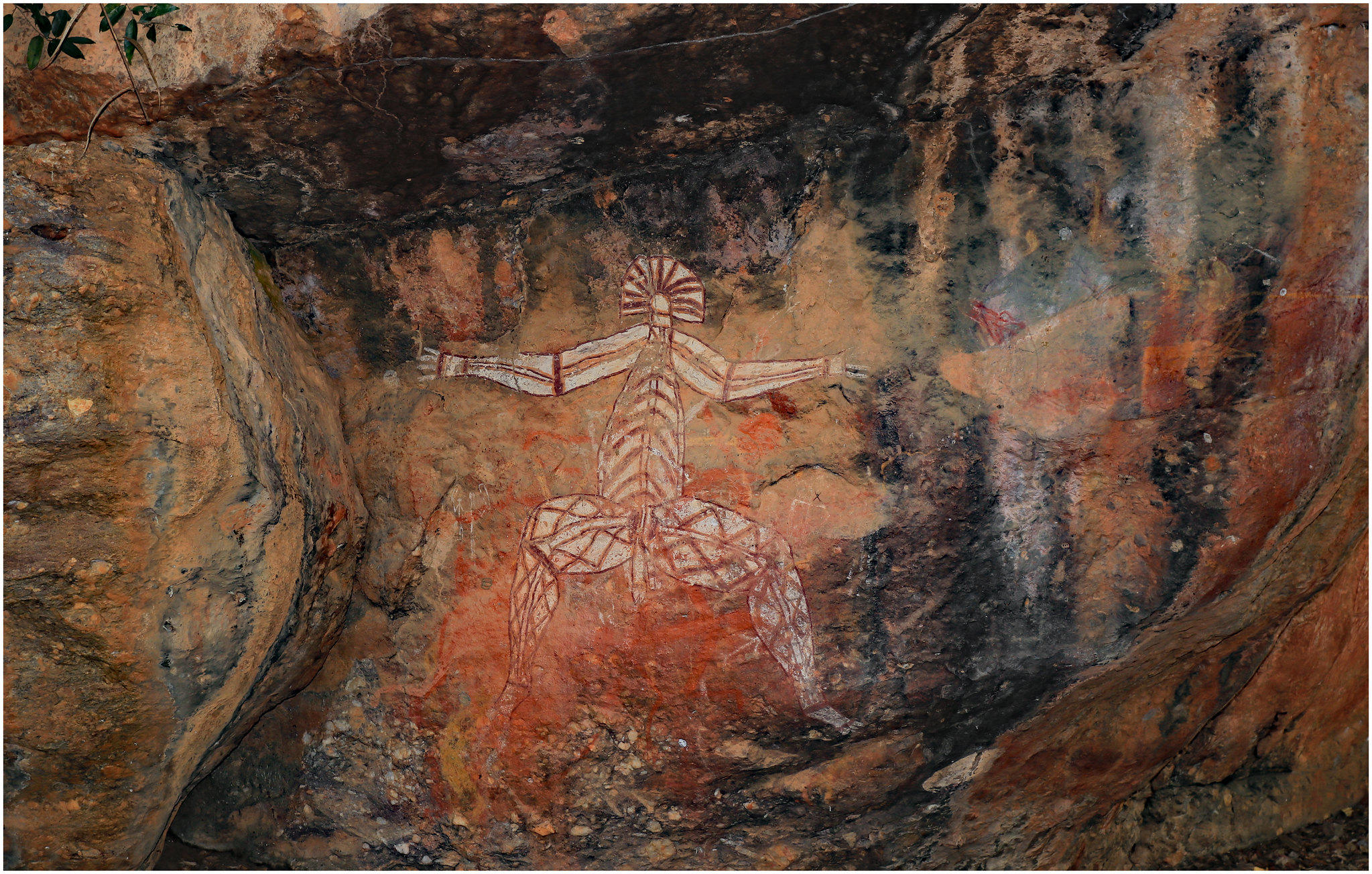
Another common method was creating handprints or using the hand as a stencil by blowing paint from the mouth, which would spray the paint over the hand and the rock wall. When the hand was removed, the silhouette of a hand remained.
Common motifs in pictographs include these hand silhouettes, human figures, and animals. Often, geometric shapes were also incorporated into the drawings. This is the element that makes traditional Aboriginal artwork stand out from ancient art found in other places in the world.
There are not many ancient pictographs where the story is known. The only rock painting with a recorded Aboriginal interpretation is the Bunjil painting in Southern Victoria, which depicts Bunjil, the main Dreaming Being of south-eastern Australia.
Rock Carvings and Etchings
The other main forms of ancient Aboriginal art that survive today are carvings, etchings, and engravings. These petroglyphs were created by removing bits of rock via pecking, hammering, or abrading (scratching). To make large carvings, guiding peg holes were first made, and then they were connected to create a line, like connect-the-dots.
The motifs of carvings tended to be simpler and more geometric. Animal tracks, V shapes, lines, ovals, and barred ovals are typically found as graphic elements.
Aboriginal culture is the world's oldest known continuous living culture in all of history. It’s important to remember that when talking about ancient Aboriginal and Torres Strait Islander culture, we are talking about a culture that still exists. For example, there are still Indigenous Australians who paint on rocks; it is not an extinct art form.
Body Painting As An Art
While paint on the body is only temporary, it is also an important art form in many cultures, including First Nations peoples.
Just like how some rock paintings depicted stories and recorded history, Aboriginal body painting was and is used to tell stories, as well as prepare an individual for ceremonies and rituals. It’s an important combination of Aboriginal culture art.

Geometric and figurative designs are both used.
Paint designs are unique to each region and clan, and the specific types of paintings can be used to connect people with their ancestors, pass on Dreaming stories to their descendants and other group members, and connect with Dreaming.
Body painting used in conjunction with ritual dances and ceremonies has been prevalent in Aboriginal culture for thousands of years and is still present today. It continues to evolve over time as clans mould and shape their personal traditions.
There are many other types of Aboriginal art, as well as artistic phases and movements just in recent history. However, it’s impossible to talk about all of Indigenous Australian art history in a short article. Some other key types of art include: bark-hut paintings, bark paintings, sculptures, and ground paintings. Some other concepts in Aboriginal art history to be aware of are the promotion of Aboriginal Australian Art appreciation in Australia and the West, the Bark Petition, the effects of the policies that created the Stolen Generations, and the Modern Aboriginal Art Movement.

Western Desert Art Movement: Papunya Tula
In 1971, a group of Aboriginal artists located in a government settlement in Papunya collaborated to begin painting traditional designs with acrylic paint and small boards. Together, they formed the Papunya Tula Artists Cooperative in 1972.
Since the arrival of settlers in the 18th century, colonists have started trying to suppress the Indigenous people, aiming to strip them of their culture, heritage, and art. Over time, the colonist government put different measures in place to try to get rid of Aboriginal culture, including forcing Indigenous people to leave their ancestral lands and instead live in government-created assimilationist settlements in the 1950s-70s.
The Papunya Tula artists, located in the then-government-controlled settlement, began reclaiming art, showing that their spirit and culture could not so easily be broken.
At first, it was just a way for the people in the settlement to express themselves and rebuild their ancient artistic practices of portraying important stories using drawings and paintings.

But in 1971, Kaapa Tjampitjinpa created Men’s Ceremony for the Kangaroo, Gulgardi and won the Caltex Golden Jubilee Art Award alongside a European-style painting. Suddenly, it was realised that Aboriginal art could excel on the world stage. This revelation was met with mixed feelings. Some Indigenous people were excited about the development since it meant that Aboriginal artists could earn money from their works, but others were upset that the sacred practice was being commercialised and that outsiders were viewing private information contained within the art.
To mitigate sacred information from being interpreted by outsiders while still creating paintings, Aboriginal artists started hiding the real interpretation of their work through design.
This new style of painting arose and popularly became known as ‘dot painting.’
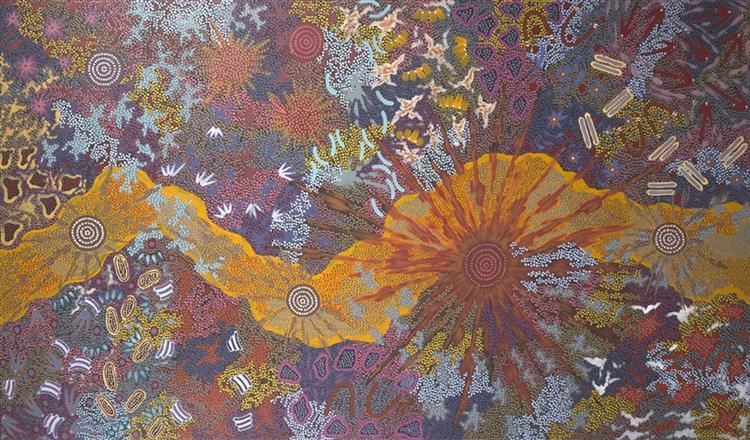
Why are they called dot paintings? The overarching style is reminiscent of the Aboriginal art of the past, especially body paintings, which used dots and short dashes to create images. The majority or entirety of the composition is made of dots and/or short dashes. Of course, each artist has their unique style, but just like how Renaissance painters all had a similar style, so too do many Aboriginal artists.
Many Aboriginal artists today continue to paint in this style. But it’s not the only style aboriginal artists use!
In a broad sense, all art is important! For anthropological reasons, art is important because it helps give insight into how people thought/think and lived/live. To Aboriginal people, their art is important because it is part of their centuries-long history. It helps connect them to their ancestry and the land, as well as their beliefs in Dreaming. The art is culturally and spiritually vital to the health and well-being of the people.
Contemporary Aboriginal Art
When contact between European settlers and Aboriginal peoples was first made, one of the impacts was the influence on art. While, as discussed above, many Aboriginal artists did and do still paint in a more traditional and/or exclusive style, there have also been many Aboriginal artists who learned to create art in a European fashion. Even in the 1930s, Aboriginal artists like Albert Namatjira started painting and exhibiting landscapes alongside contemporary European landscape artists.
Since the 1970s, the contemporary Aboriginal art movement is really considered to have begun. This includes the dot paintings from Papunya Tula.
The major defining aspect of contemporary Aboriginal art is its commodification. Previously, Aboriginal art was only used as a cultural way to pass information between generations and remember stories of ancestors and Dreaming.

Contemporary Aboriginal artists typically obscure the true meanings of their works from outsiders by avoiding the use of specific figures in order to keep private, secret information from being gleaned while still being able to create art about specific subjects that can be sold.
Other Aboriginal artists paint in non-traditional styles, which are also suitable for selling and earning a living.
Where traditional art was created with materials like ochre and chalk painted onto rocks and bark, contemporary artists tend to use media like acrylics and watercolours. Some artists use traditional colours while others have embraced brighter and more diverse palettes.
Beyond paintings, drawings, etchings, and carvings, modern Aboriginal art has expanded to include things like screenprinting, linocut, silkscreening, printmaking, photography, film, textiles, ceramics, and jewellery.
Famous Aboriginal Artists
Since recordkeeping began, there have been many notable and influential Aboriginal artists. Sadly, the world will never know the greats who created old Aboriginal art, but perhaps memory of their artistic talent lives on with their descendants.
Those we do know help show the highlights of Aboriginal art. Although the “most famous” Aboriginal artists are typically deemed as such through a Western, European lens, and therefore there may be many more exemplary artists whose work simply cannot be fully appreciated by outsiders, it doesn’t diminish their talents and achievements. Aboriginal art becoming recognised in the Western sphere has helped break down cultural barriers, improve relations, and create more harmony.
Here are a few of the most famous artists of Indigenous ancestry in Australia and their contributions to the cumulative world of art.
Albert Namatjira (1902-1959)
Namatjira had always displayed an affinity for painting and arts, and when he was in his thirties he learned about painting in watercolour from a white Australian artist, Rex Battarbee. Namatjira quickly mastered the medium and started creating beautiful landscape paintings. At this time, many white artists were coming to Australia to paint landscapes, and their works were typical of the European art styles, portraying realistic and romantic versions of the landscapes with a white European interpretation.

Namatjira managed to create paintings that, on the surface, seem to match this European styling. However, upon further inspection, one can see that his paintings manage to portray the landscape in a different way. Even though Namatjira grew up in a settler mission, he was raised with his Indigenous family and therefore was taught about his heritage, traditional cultural practices, sacred stories, and nurtured a spiritual connection with the land. These ideals shine through in his paintings in a way that simply had not and can not be communicated from a settler’s brush.
His most famous paintings include Mount Sonder (c. 1945) and Illara Creek (c. 1945).

These paintings and others brought Namatjira international recognition and helped raise awareness of the injustices that the Indigenous people of Australia were being subjected to.
At the time, Indigenous people were not allowed to be citizens of Australia.
Due to public pressure, Namatjira was the first Aboriginal person to be granted Australian citizenship, in 1957.
However, it was soon revoked, and this combined with many other long-standing frustrations stemming from systematic injustice contributed to Namatjira’s early death. Ultimately, though, his life’s story helped future Indigenous people secure more rights in the future.
Emily Kame Kngwarreye (1910-1996)
Perhaps the most widely known Aboriginal artist, Emily Kame Kngwarreye was an Anmatyerre elder from the Utopia homelands. In 1988, she was introduced to acrylic painting and created her first painting, Emu Woman (1988-89), which was an instant success. In just eight years, she created over 3,000 acrylic paintings, averaging about one painting per day.
Towards the end of her life, Kngwarreye painted Big Yam Dreaming (1995), her other most recognisable work. In the last two weeks before her death, she created 24 canvases with inspired vigorous creativity, now called My Country - Final Series, 1996.

Her art was inspired by and was an homage to her homeland and ancestry. Many of the Aboriginal art symbols, themes and motifs in her works were directly from the Alhalkere lands, like Arlatyeye (pencil yam), Tingu (a Dreamtime pup), Ankerre (emu), and even her namesake, Kame (yam seed pod).
Mirdidingkingathi Juwarnda Sally Gabori (1924-2015)
Sally grew up with her family in a traditional setting located on the south side of Bentinck Island, known as Mirdidingki, of the Kaiadilt people. It wasn’t until 1948 that Sally moved from her homeland to a different island nearby as a result of drought and a cyclone making Bentinck Island uninhabitable. There, she was moved with many other people into a society run by Presbyterian missionaries. And it wasn’t until she was 81 years old, living in an Aged Person Hostel at Gununa, that Sally picked up a brush and started painting.

Her painting style is incredibly unique because her people had no tradition of painting, historically. And, she did not know anything about painting styles from other parts of the world. So, although her works have been called ‘abstract expressionist’ and ‘gestural abstraction,’ the fact is she was not using any established art theory to create. She simply created. Her works portray the land of her people, showing what life on her ancestral lands was like through her own eyes.
Using her childhood and young adult life as inspiration, Sally painted scenes from her life on Bentinck Island. Her work was, and is, so popular that it has been featured in many exhibitions over the years. She encouraged her daughters to begin painting as well and even collaborated with them on a few projects. She single-handedly created a tradition of painting in the Kaiadilt community. In just eight years, she created over 2,000 paintings.
Her technique is very notable because it differs from most Aboriginal art, especially during this time period. It uses a wide, vibrant colour palette and utilises abstract full-colour shapes rather than dots, dashes, and lines. Some of her most famous paintings include Dibirdibi country (2008) and Dulka Warngiid (2007).
Rover Thomas (1926-1988)
From the area near Gunawaggii, Thomas and his family moved to the Kimberley when he was young.
In 1977, he would perform the Krill Krill ceremony with his uncle, dancing on the remains of old tea chests. The ceremony was inspired by a dream regarding the loss of a family member in Cyclone Tracy and depicted her after-life journey back to the homeland.
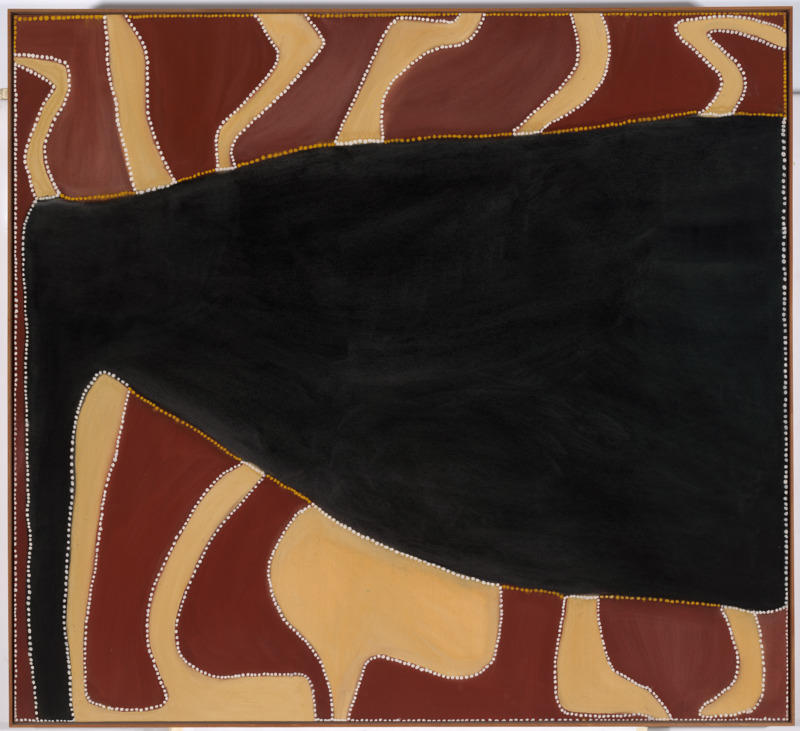
Thomas also interpreted the dream as a message that the lack of Aboriginal cultural practices was leading to disaster. So, he embraced the arts as a way to revive the Gija heritage and culture. He first worked with natural pigments, but they would often deteriorate and fall off the canvas over time, so later on he utilised more stable mediums.
His paintings portrayed the land and its personality well. His perhaps most famous paintings include Two Men Dreaming (c. 1985) and Cyclone Tracy (1991).
Clifford Possum (c. 1932-2002)
Clifford Possum was one of the founding members of the Papunya Tula art movement. His artistic inspiration drew from the ancient knowledge of his ancestors and the spiritual landscape of his homeland. His intricate and masterful paintings depict different Dreaming stories as well as ancestral knowledge and the inherent spiritual and physical laws of the land.
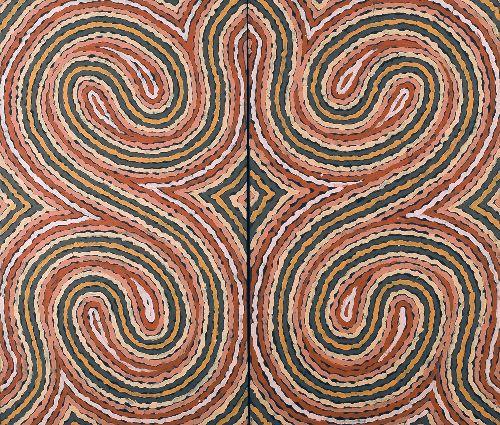
His breakthrough into the “mainstream” art world opened doors for all Aboriginal people (and perhaps Indigenous people across the world). For the first time on a notable scale, Aboriginal art was taken seriously by Western standards, even garnering international interest from people who really appreciated the talent and were at least interested in the meaning, even if they couldn’t really understand.
Possum was able to straddle the world of tradition and new society to both honour his heritage and make fair market earnings in a world that required money.
Some of his most memorable works include Warlugulong (1977) and Man's Love Story (1978).
Modern Aboriginal Artists to Know
While it’s not possible to go into detail here, there are a few modern Indigenous Australian artists that anyone with a passing interest in Aboriginal art should know!
Some such artists include:
- Alison Munti Riley
- Daniel Boyd
- Betty Muffler
- Charlene Carrington
- Kaylene Whiskey
- Matjangka (Nyukana) Norris
- Otis Hope Carey
Aboriginal art history in Australia is extensive, even though from an outsider’s perspective, most of it has only occurred in the past hundred years. Truly, there is so much to learn about Indigenous Australian art!









